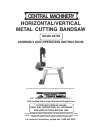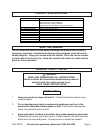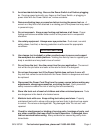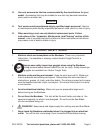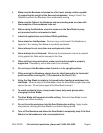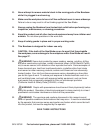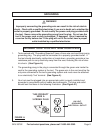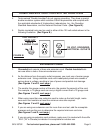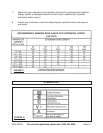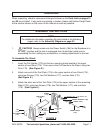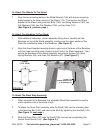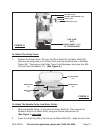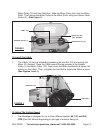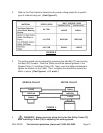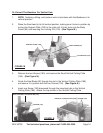SKU 93762 For technical questions, please call 1-800-444-3353. Page 6
8. Make sure the Bandsaw is located on a flat, level, sturdy surface capable
of supporting the weight of the Saw and workpieces. Always “chock” the
Wheels to prevent the Bandsaw from accidentally moving.
9. Make sure the Table of the Bandsaw and surrounding area are clear with
the exception of the workpiece to be cut.
10. Before using the Bandsaw, check to make sure the Saw Blade is prop-
erly mounted and is not cracked or bent.
11. Industrial applications must follow OSHA guidelines.
12. Never stand on the Bandsaw. Serious injury could result if the Bandsaw is
tipped or if the rotating Saw Blade is accidently contacted.
13. Never attempt to cut more than one workpiece at a time.
14. Never attempt to cut freehand. Make sure the workpiece to be cut is pressed
firmly against the Table and/or secured in the Vise.
15. When cutting a large workpiece, make sure its entire length is properly
supported. If necessary, use a roller stand (not included).
16. Do not lean on the Bandsaw when the tool is in its upright position.
17. When moving the Bandsaw, always have its Head lowered to its horizontal
position and the Locking Pin (115) inserted in the Pivot (120).
18. Allow the Saw Blade to rotate to full speed before feeding a workpiece into
the Blade. When turning off the Bandsaw, allow the Saw Blade to spin down and
stop on its own. Do not press against the Saw Blade to stop it.
19. To avoid accidental injury, always wear heavy duty work gloves when
changing the Saw Blade.
20. The Saw Blade will become hot while cutting. Allow the Saw Blade to com-
pletely cool before handling.
21. Do not force the workpiece into the Saw Blade when cutting. Apply moder-
ate pressure, allowing the Saw Blade to cut without being forced.
22. Turn off the Bandsaw and allow the Saw Blade to completely stop if the Saw
Blade is to be backed out of an uncompleted cut.



